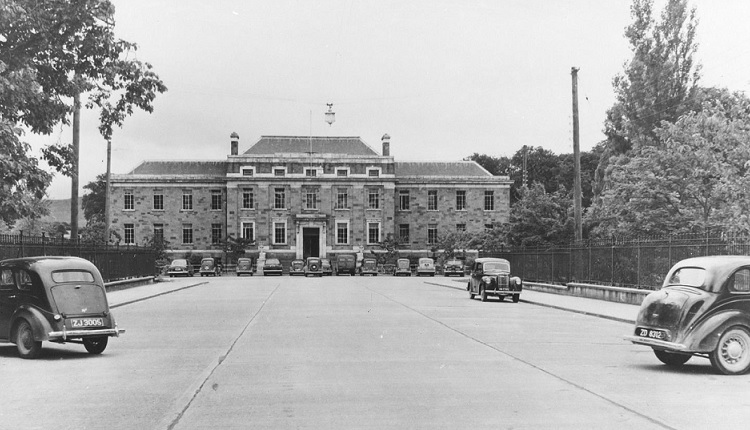Two Wheeled Freedom Fighter | Thomas Ashe and his Hudson Motorcycle
In September 1917 Thomas Ashe was sent to Mountjoy after making a so called seditious speech. For this ‘crime’ Ashe ended up behind bars by the Royal Canal and denied political prisoner status. He began a hunger strike but just five days later the Kerry native died after a brutal ordeal of force feeding by the prison authorities.
Ashe was your typical Gael, he was an accomplished Piper, a Gaelic language enthusiast, a poet and freedom fighter. He loved all things Irish but he also had a great love for motorbikes.
Ashe was the proud owner of a New Hudson motorbike, a two and a half horse power machine built in Birmingham. Ashe’s mode of transport ran on Dunlop tyres and just the one gear. His profession as a national school teacher in Lusk gave him the means to finance his love of bikes and this rebel with a cause drove the revolution on two wheels.
During Easter Week 1916 Ashe commanded the Fingal battalion of the Irish Volunteers so he got his motor running and headed out on North Dublin’s roadways directing his men in urban warfare.
When Ashe went to lead the action at Ashbourne he entrusted Volunteer Joe Lawless with his beloved bike. Lawless then carried 50lbs of gelignite on Ashe’s bike to derail part of the Great Northern Railway. When the bike ran out of petrol Lawless placed it with a friendly farmer who hid it in a cowshed. After the Rising the Hudson was given to Ashe’s sister while Ashe himself was doing time in jail for his role in the rebellion. There is a famous photo of Ashe taken in Kilmainham jail after his arrest and he can be seen still sporting the lower half of his motorbike suit and boots.

From Kilmainham he was sent across the Irish sea to Lewes jail and in June 1917 he was released back to his beloved Ireland. Ashe flung himself back into the national cause and in July he travelled to Clare to help De Valera win the East-Clare by-election for Sinn Fein. The following month Ashe splashed out on a new motorbike.
In August 1917 Ashe bought a Hazelwood twin cynlindar six horse power Coventry built motorbike. With a kick start engine and three gears, it cost Ashe the pricey sum of £90 but it had an added bonus – a wicker side car, which if you are a revolutionary is an advantage when it comes to transporting arms. Compared to the Hudson, the Hazelwood was a bigger beast but unfortunately for Ashe he didn’t get much use out of his new purchase because he was arrested in Longford after delivering a speech there against conscription.
Ashe was sent to Mountjoy where he was denied political status and to protest against this he went on hunger strike. He started his hunger strike on September 20th and on the fifth day warders entered his cell to take him away for a session of force feeding. An hour later they returned the bike loving Kerry man, unconscious. After a few more hours he was pronounced dead on the 25th of September 1917 at the age of 32.
A year after his death both the Hudson and Hazelwood were offered by the Ashe family as prizes in a raffle to raise funds for the construction of a memorial hall in Tralee. The tickets for the raffle cost a shilling each and the draw took place on St Patrick’s Day 1918. The first prize was the impressive Hazelwood with its wicker side car while the Hudson which saw action in 1916 was the second prize. The ticket also informed the prospective winner that the Hudson’s ‘magneto requires attention.’

The tickets were sold across Ireland and as far away as Britain and the US and the winning numbers were published in newspapers. Even though we do not know who won the bikes or what became of them afterwards, we do know that enough money was raised to build the Ashe Memorial Hall on Denny Street in Tralee.
Construction did not begin until 1924, there was the little matter of the War of Independence and a Civil War to get out of the way first. The building was finished in 1928 and it became home to the Kerry County Council for the next 60 years. These days the Ashe Memorial Hall is home to the Kerry County Museum and earlier this year it was rededicated to the Kerry patriot who died 100 years ago and whose love of biking indirectly resulted in the construction of the famous building on Tralee’s Denny Street.
